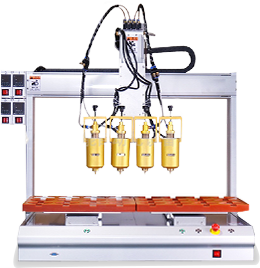

The quick-lock mechanical connector is an industrial-grade accessory designed for efficient connection needs. It is made of high-strength alloy steel or stainless steel, and is made through precision forging and CNC processing. Its unique buckle structure can achieve rapid locking and separation through pressing, rotating or plugging operations, greatly shortening the assembly and disassembly time of equipment. It is widely used in automated production lines, engineering machinery, aerospace and other fields, providing a reliable connection solution for mechanical parts.
Provide a variety of specifications and models to adapt to different sizes of pipes, plates and shaft parts; support customized design, and can adjust the lock shape, connection method and load parameters according to needs. Some common specifications are as follows:
model | Material | Maximum load (kN) | Applicable pipe diameter (mm) | How to operate |
KL - 10 | 42CrMo | 50 | 10 - 30 | Rotary type |
KL - 25 | 316L Stainless steel | 120 | 25 - 50 | Press type |
KL - 50 | alloy steel | 200 | 50 - 80 | Plug type |
III. Product Details
1. Material Type
Alloy Steel: 42CrMo, 35CrMo and other high-strength alloy steels are selected. After heat treatment, the comprehensive mechanical properties are excellent and suitable for heavy machinery and equipment, engineering machinery and other high-load scenarios.
Stainless Steel: 304 stainless steel is suitable for general industrial environments, with high cost performance and corrosion resistance; 316L stainless steel adds molybdenum elements, which has strong resistance to strong corrosive media such as seawater, acid and alkali, and is often used in special fields such as marine engineering and food processing.
2. Structural Design
Lock Structure: Covers rotary, press-on, plug-in and other types. The rotary type is fastened by thread and slot; the press-on type is quickly locked by spring and buckle elastic connection; the plug-in type relies on pins and sleeves to complete the connection, all of which are mechanically optimized to ensure convenient operation and firm connection.
Auxiliary Device: Built-in anti-loosening components such as anti-loosening washers and safety pins, and some models are equipped with torque limiters to prevent overload; visual locking marks (such as color changes, raised marks) are convenient for quick confirmation of the connection status.
3. Manufacturing process
Using advanced processes such as CNC machining centers and precision casting, the accuracy of key dimensions is controlled within ±0.02mm, and the surface roughness is Ra≤0.8μm. Strictly test the matching accuracy of the lock and the connector to ensure tight connection and reduce vibration wear.
4. Quality inspection
Mechanical performance test: Use tension and pressure testing machines to simulate actual working conditions to verify the product's load-bearing capacity and fatigue life.
Environmental adaptability test: Conduct salt spray test (corrosion resistance ≥72 hours), high and low temperature test (-40℃ - 120℃), and wet heat test to ensure stable performance in extreme environments.
Appearance and size inspection: Use three-coordinate measuring instrument and optical detector for full-size inspection to ensure that the appearance is flawless and the size meets the standard.
 Headquarters tel.
Headquarters tel. E-mail.
E-mail.